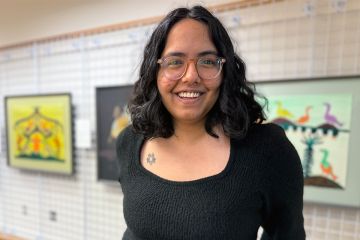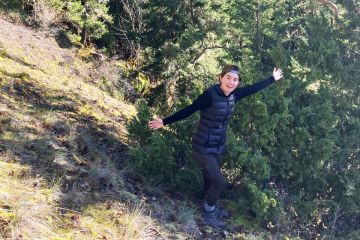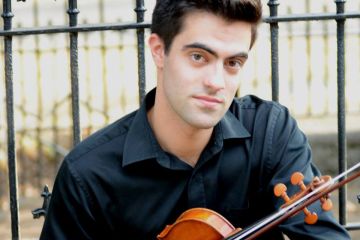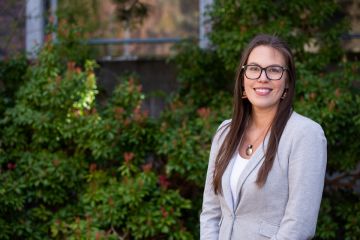Second chance scientist
- Dorothy Eggenberger
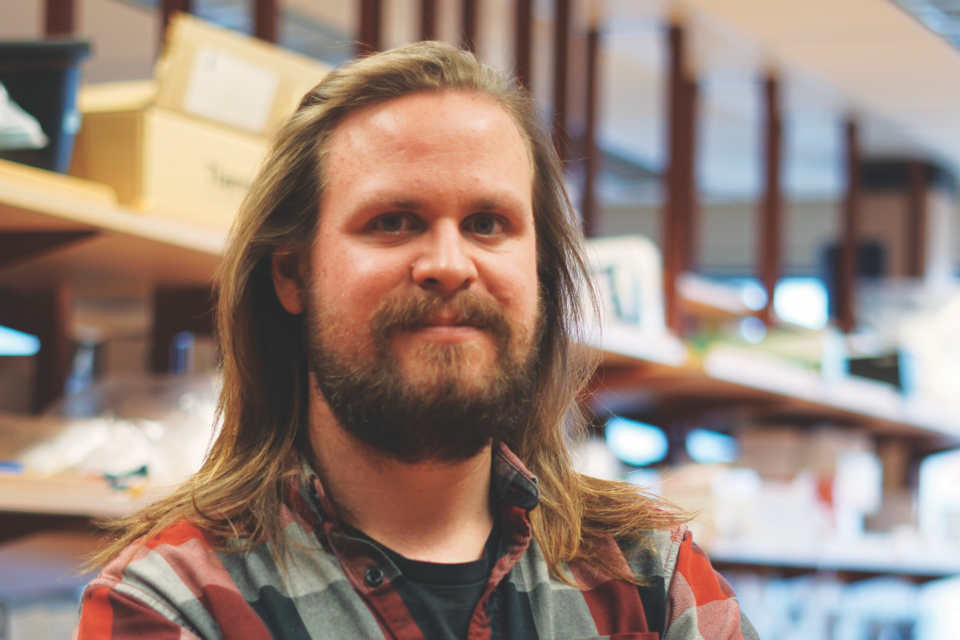
The world is full of second chances and is better for the people who have taken them. Julian Smazynski didn’t have the university experience he was hoping for the first time around, but he took a second run. This year he graduates with his PhD in biochemistry and is now a research associate at the BC Cancer Deeley Research Centre (DRC).
Smazynski says you don’t need to be an academic all-star in high school to become a great scientist or artist: “I’m a big believer in not having others define your interests. Experience as many new concepts throughout your education and follow what ignites your passion.”
Unlikely academic after the unknown
“If you’re doing pure research, what you’re really doing is studying the unknown,” says Smazynski. “The creativity and curiosity you get to utilize in understanding that unknown is what drew me to science.”
Like many high school students, Smazynski launched into post-secondary immediately after high school. He left before the year was out. “I realized it just wasn’t the right time for me,” says Smazynski, reflecting on competing obligations at home and the drastic transition from classroom to lecture hall.
Three years later, he decided to give it another shot, but this time at Camosun College. Smazynski excelled in the smaller class sizes—a quality shared by university third and fourth year classes, he would later discover. There, in a 2nd year course taught by inspirational professor Jamie Doran, he would learn about immunology, the study of the immune system.
“Our immune system evolved to detect foreign organisms and pathogens on a scale that essentially transcends evolution,” explains Smazynski. “There are organisms that may not exist yet, but your immune system could theoretically mount an immune response against them today. That blew my mind.”
He completed a diploma at Camosun and enrolled in UVic’s Bachelor of Science program for a second time, fast-tracking through first- and second-year courses via UVic’s transfer credit options.
“In third year I fortunate enough to take a course in immunology taught by Terry Pearson. He has an infectious passion for science,” recalls Smazynski. “We learned about a few groups on the island specializing in immunology research. One of them was the DRC. At that point, I knew I had to find an opportunity to get in there.”
So, as a third-year student Smazynski sat in on fourth-year lectures to connect with researchers from DRC. He asked about volunteer opportunities, and the snowball started rolling. The volunteer opportunity became a co-op opportunity, the co-op an Honours project, the project a work term, the work term graduate studies, and from there eventually his Master’s and PhD.
Trust yourself when you see something that really excites you and when you find it, seek those opportunities. Don’t wait for them to fall into your lap.
—Julian Smazynski, PhD Biochemistry '22
Next generation cancer therapies
Great ideas spin out of academic research. Now Smazynski specializes in cancer immunotherapy, a form of treatment that uses the body’s own immune system to prevent, control and eliminate cancer. Researchers genetically modify T cells (a type of white blood cell) from a patient’s blood sample to improve their cancer-tracking and cancer-attacking ability—so-called chimeric antigen receptor (CAR) T-cell therapy. The newly engineered cells are multiplied into an army and delivered back into the patient.
“Immune cells, despite our tinkering with them, are quite capable of detecting cancer cells on their own,” explains Smazynski, “But cancer cells have mechanisms to evade and inhibit that immune attack. Succumbing to that inhibition, the T cells are often too weak to kill the cancer on their own.” Smazynski is designing new mechanisms for the immune cells to overcome this inhibition.
He’s also working on moving CAR T-cell therapy trials from blood-based cancer into the solid cancer space using oncolytic virus therapy—a type of targeted therapy that infects and breaks down cancer cell defenses but not normal cells.
“It’s a challenge to find ways to allow these engineered cells to enter a solid tumour environment,” explains Smazynski, “If we can initiate a viral infection in a solid tumour, creating an inflamed immune-ready environment, and engineer our T cells to interact with those virally infected cancer cells—that could be a big step forward.”
For me, cancer immunotherapy research offers this endless supply of intrigue and questions. I really think the biotech industry is pushing the bounds in next-generation therapies, and would personally love to play a role in growing that sector in Victoria.
—Smazynski
Photos
In this story
Keywords: convocation, student life
People: Julian Smazynski, Terry Pearson, Jamie Doran
Publication: The Ring



